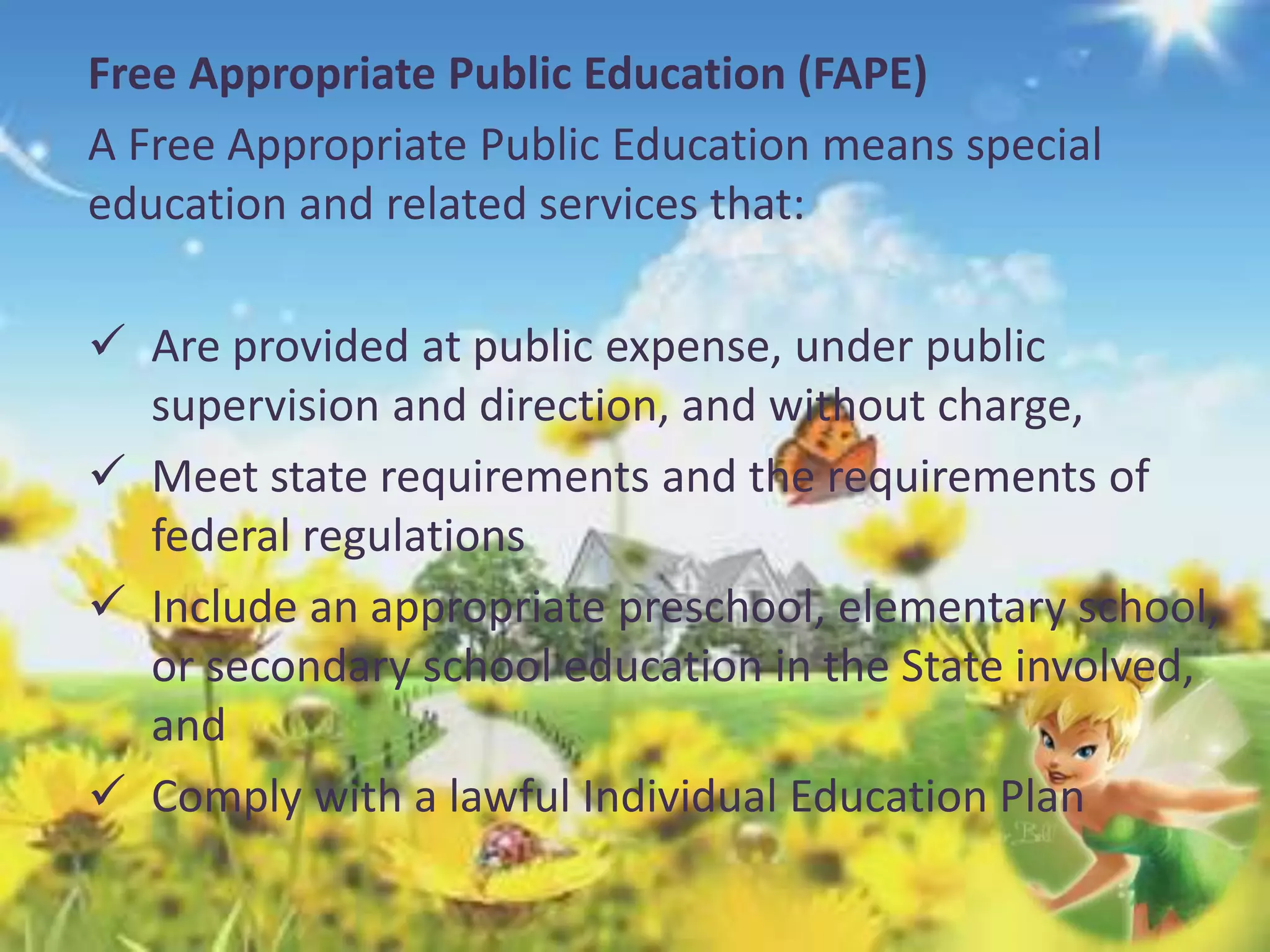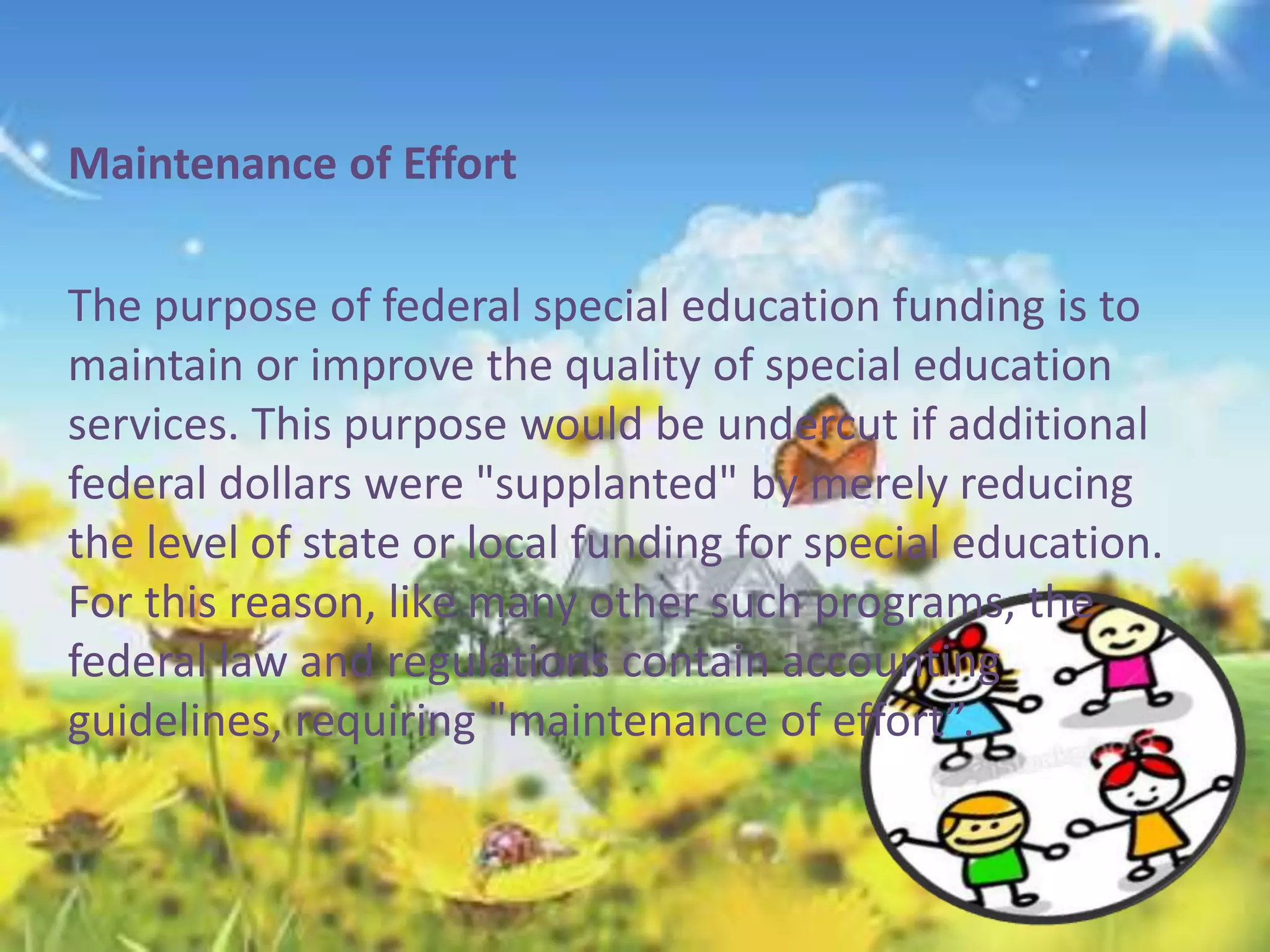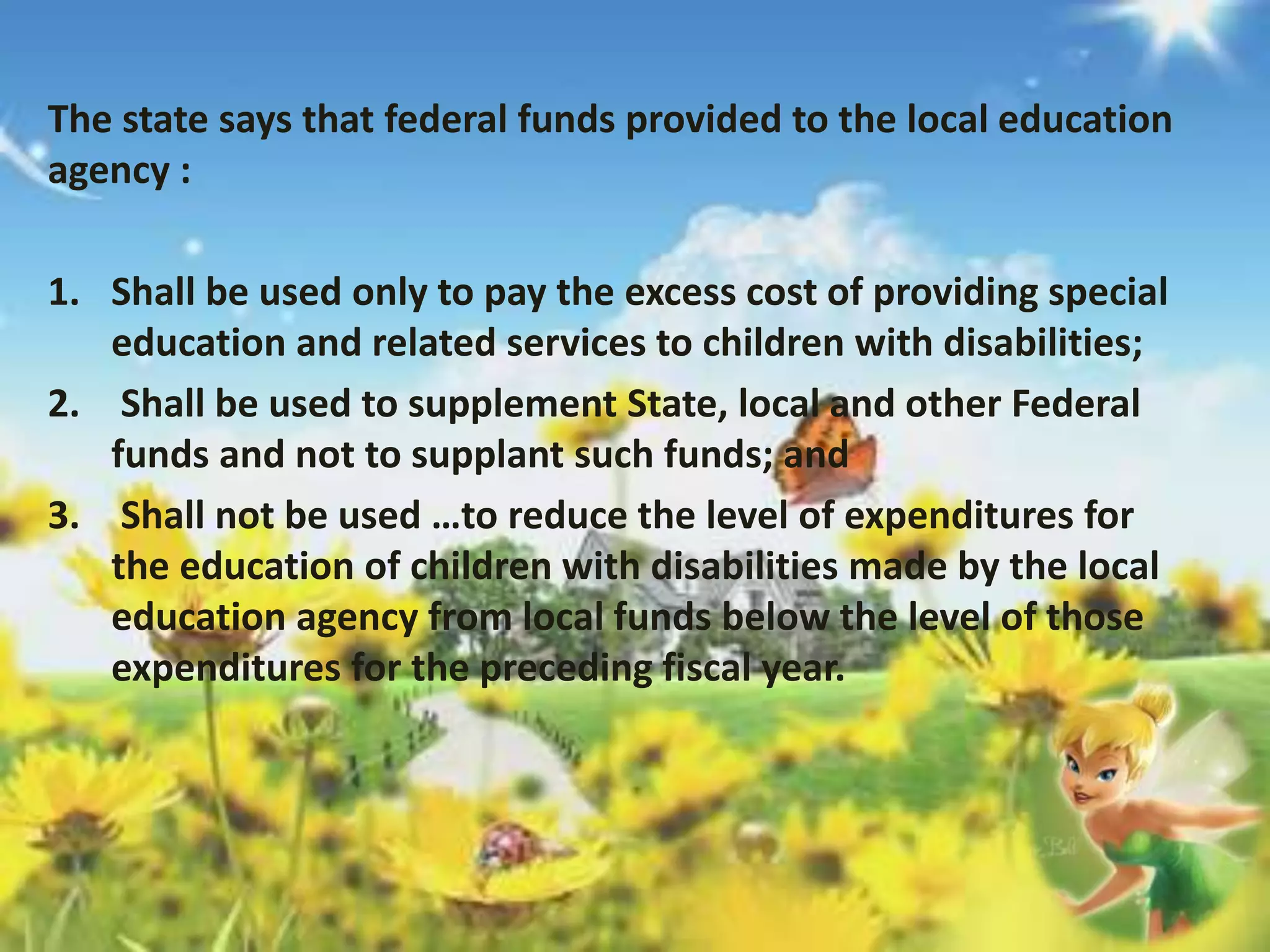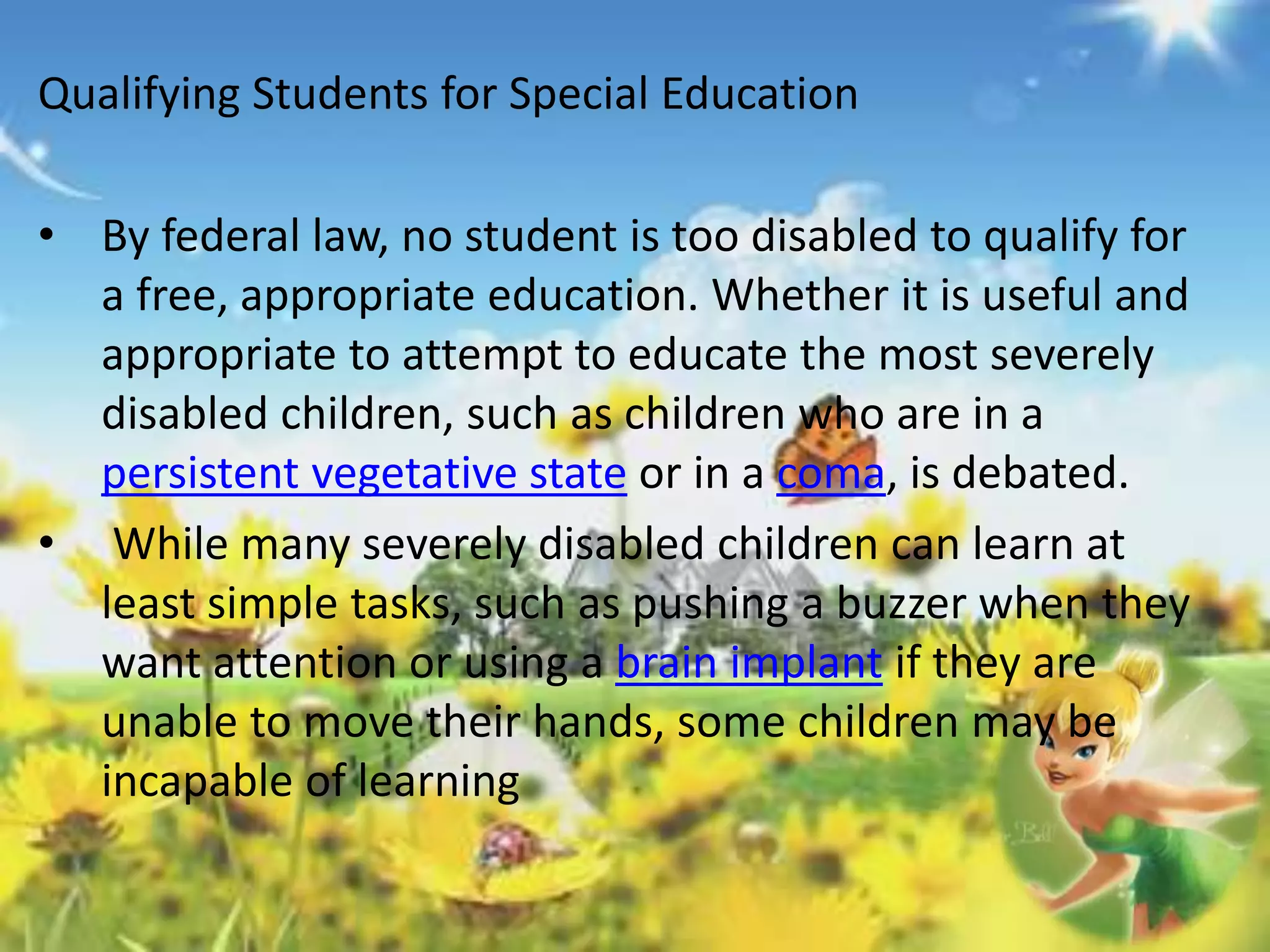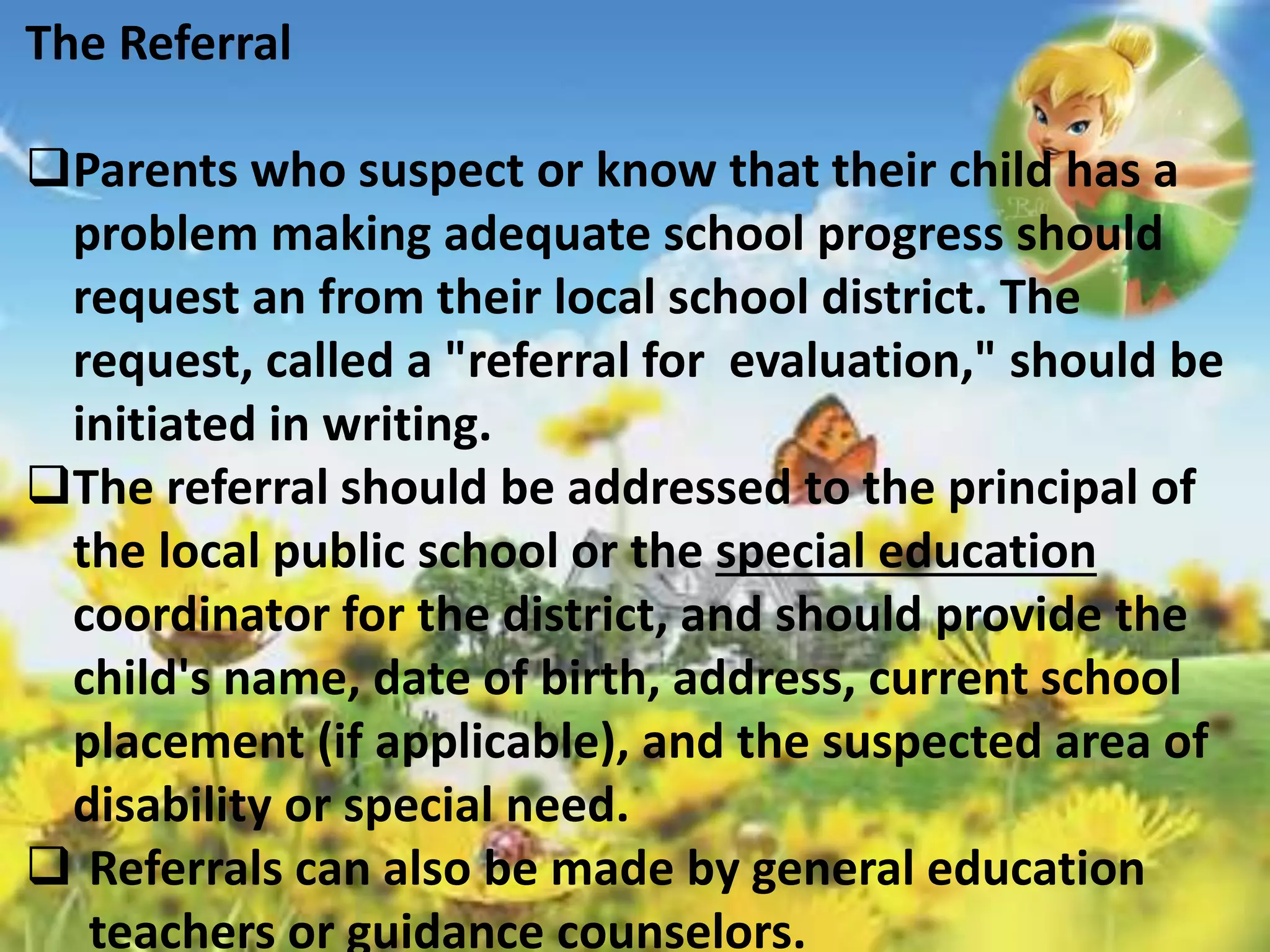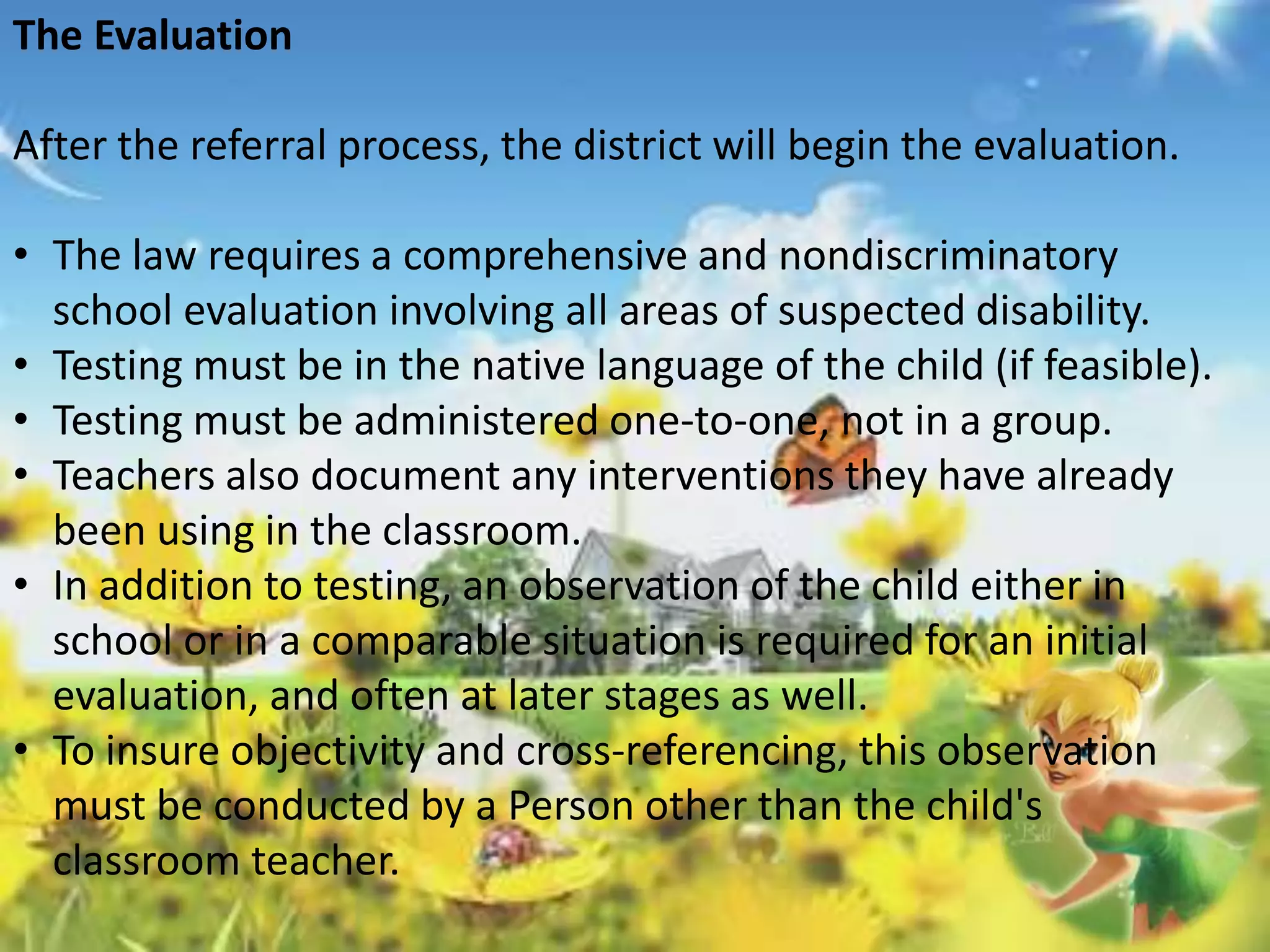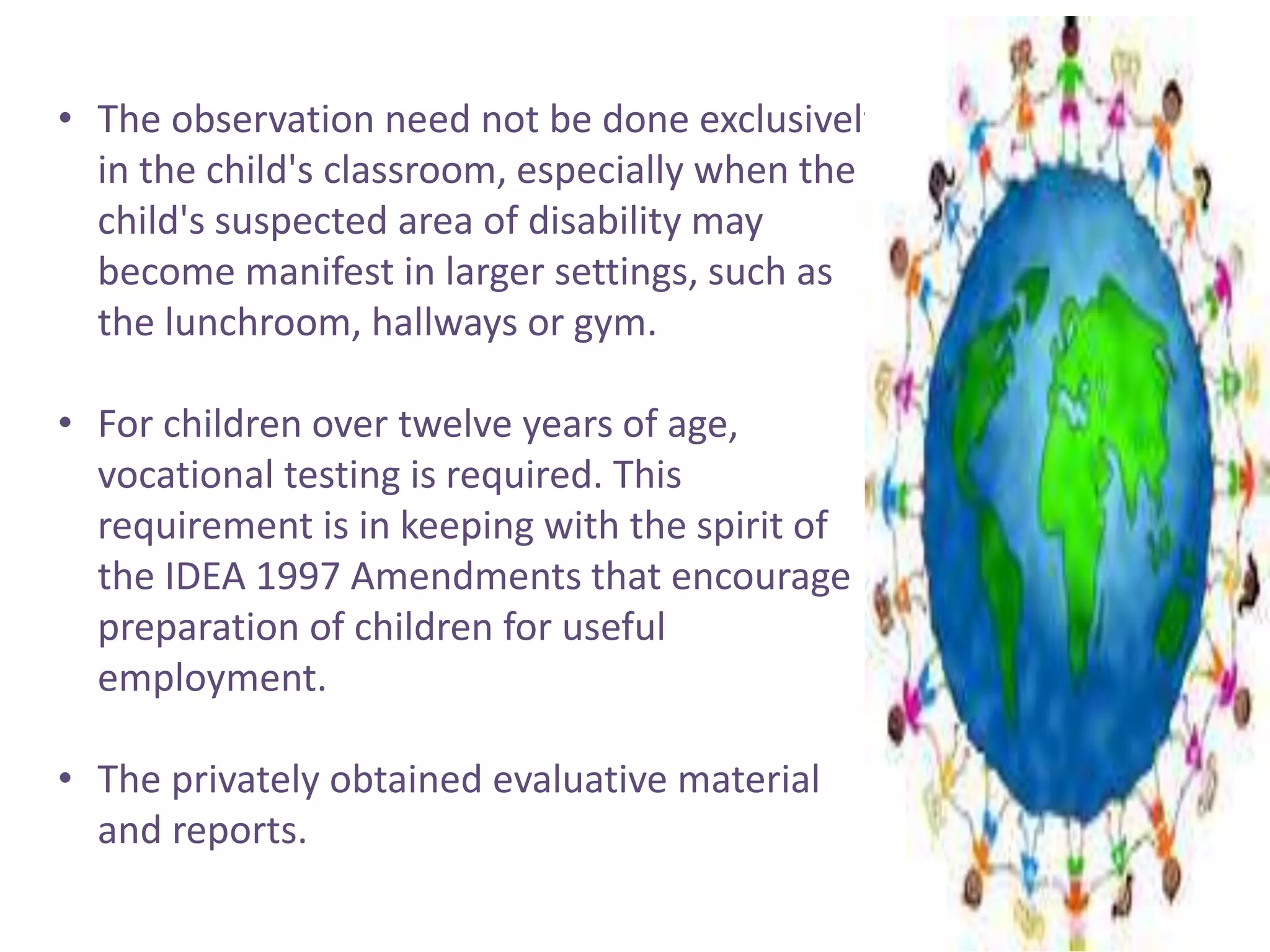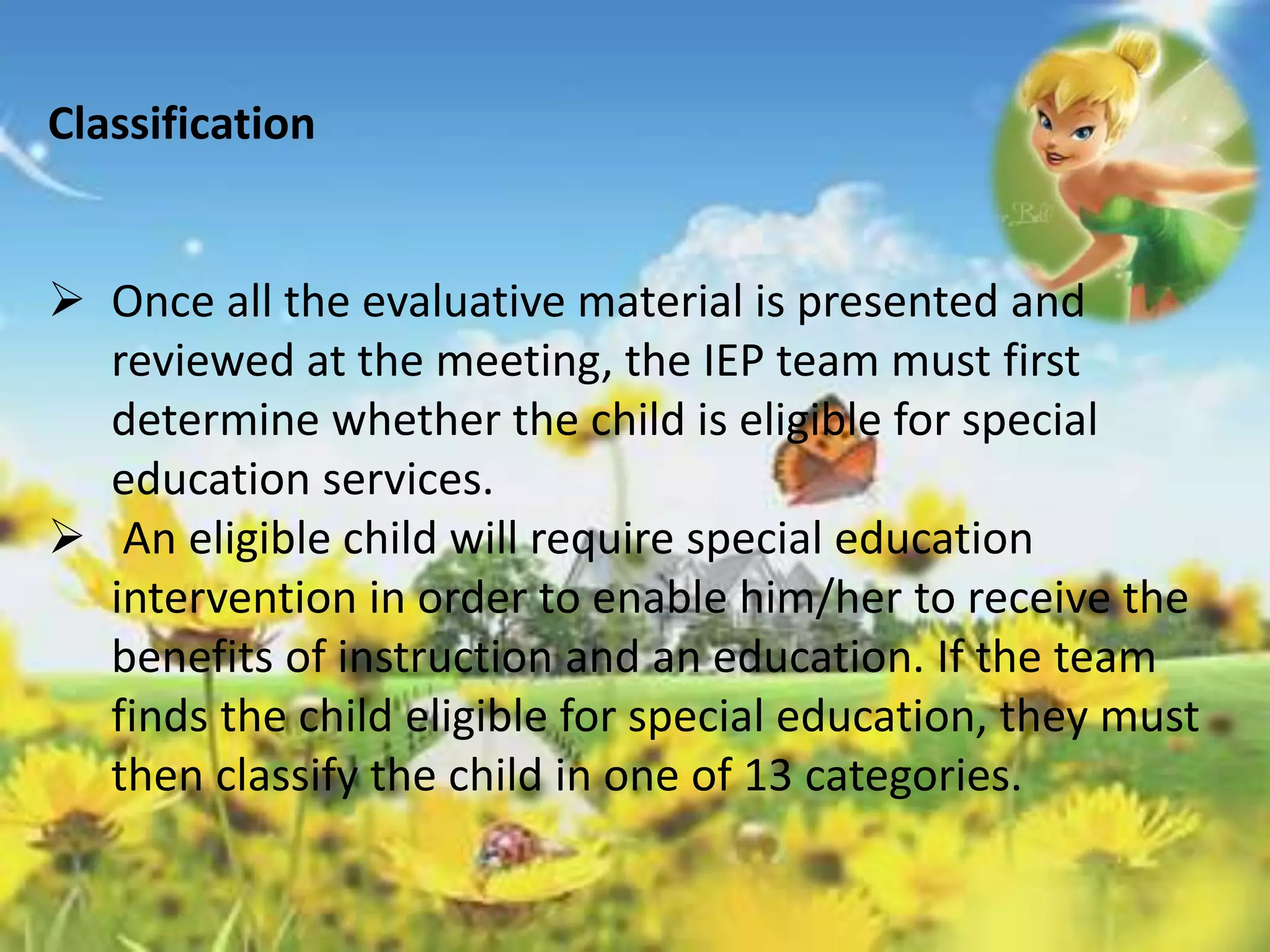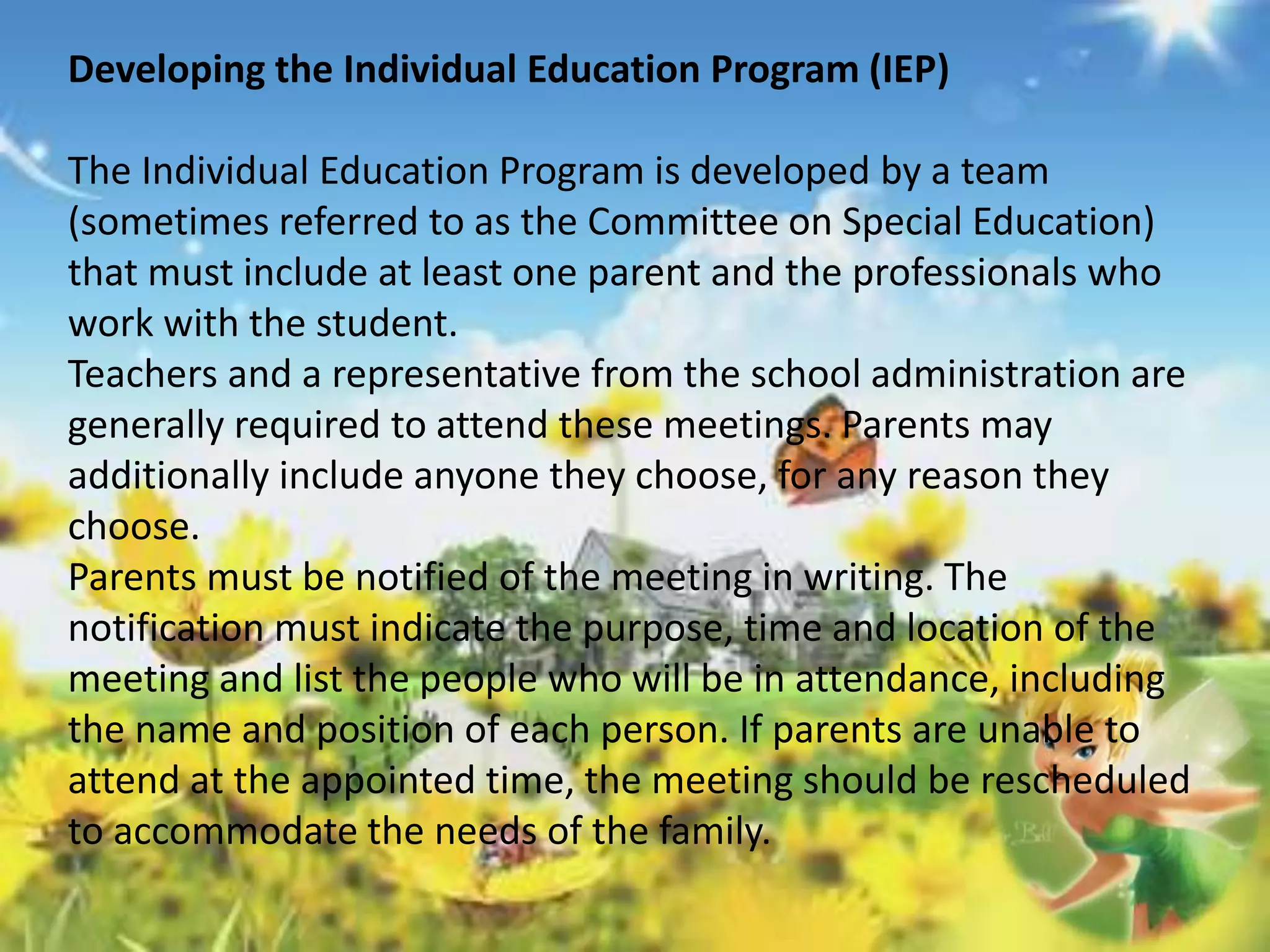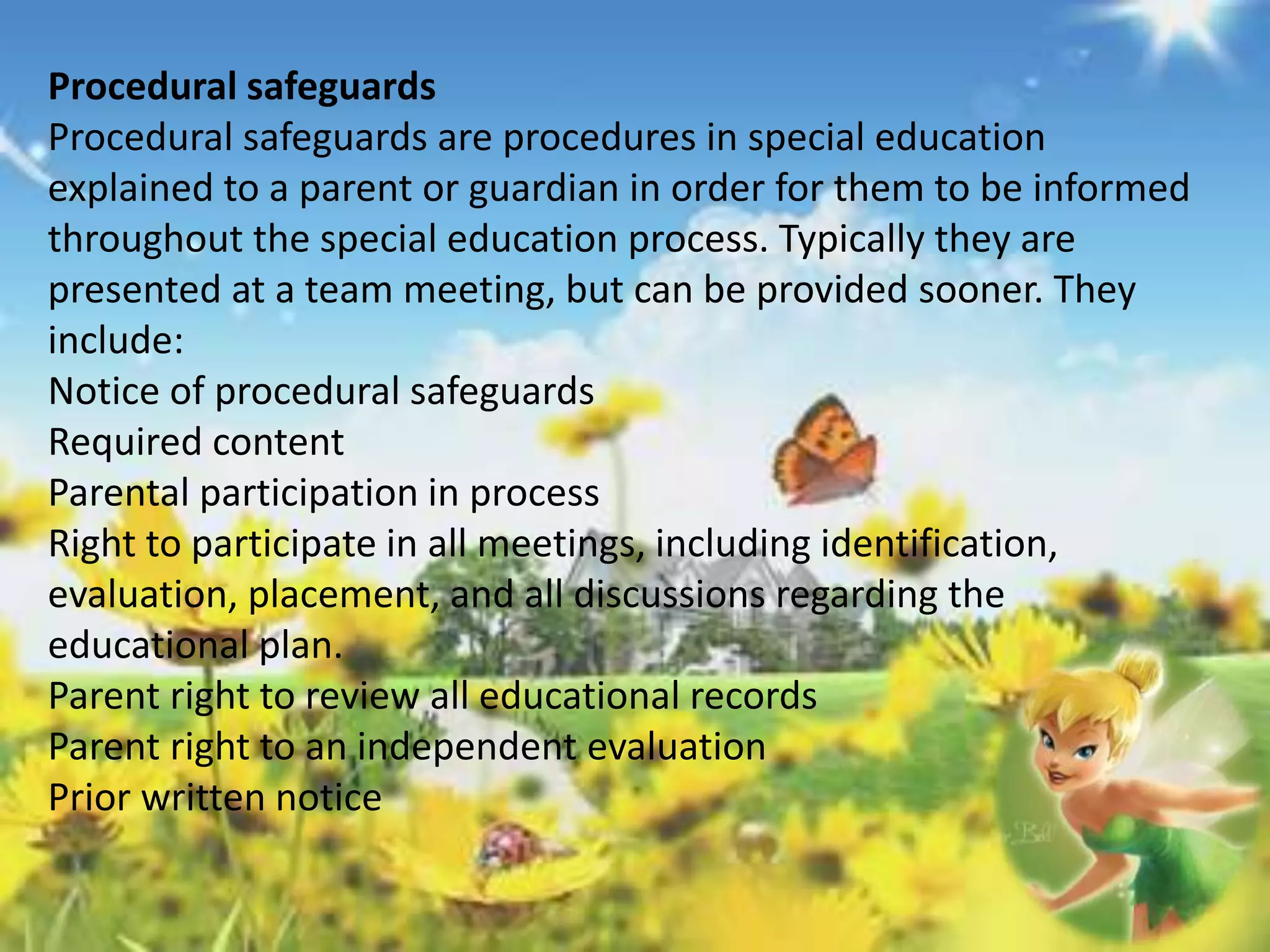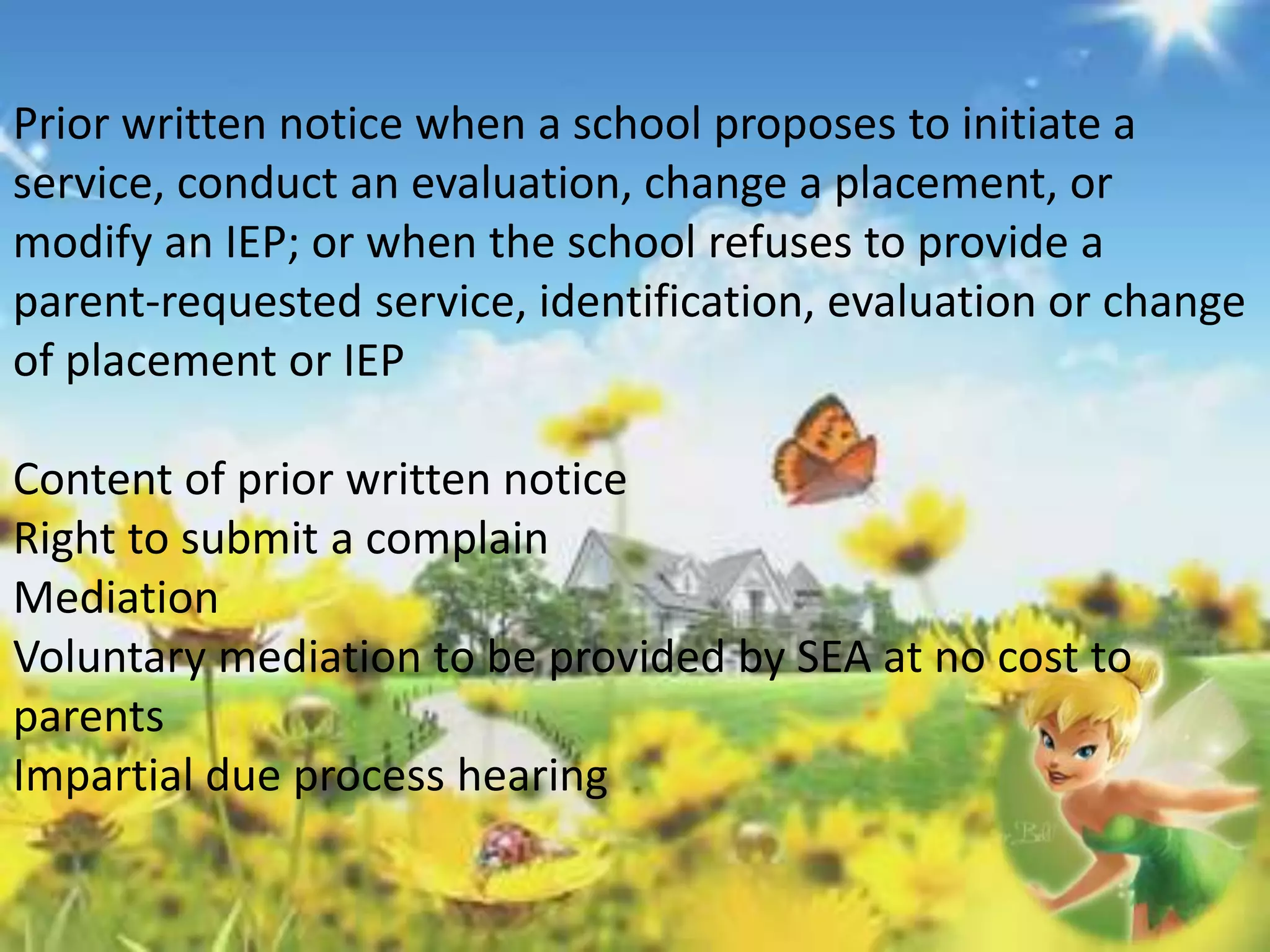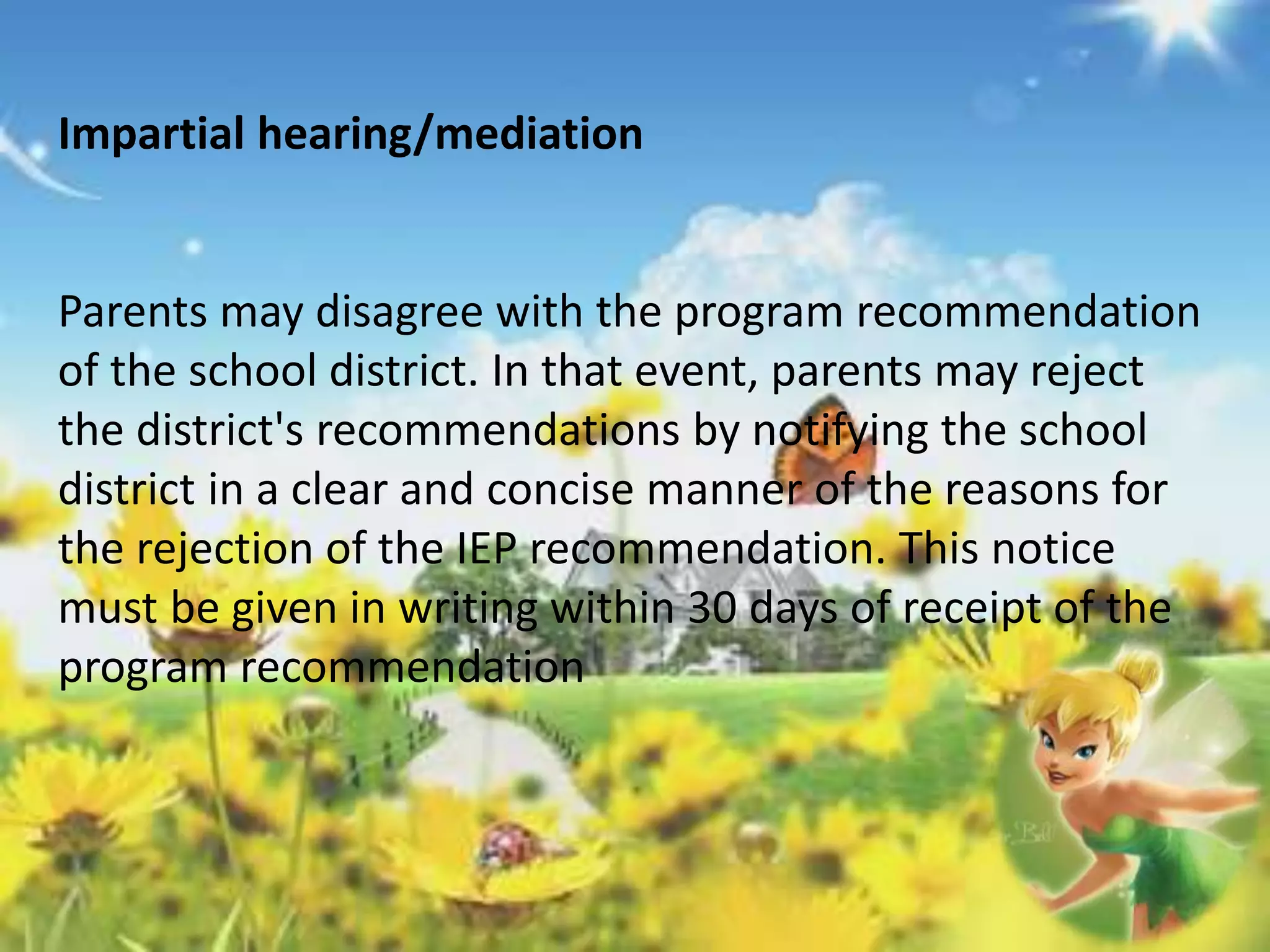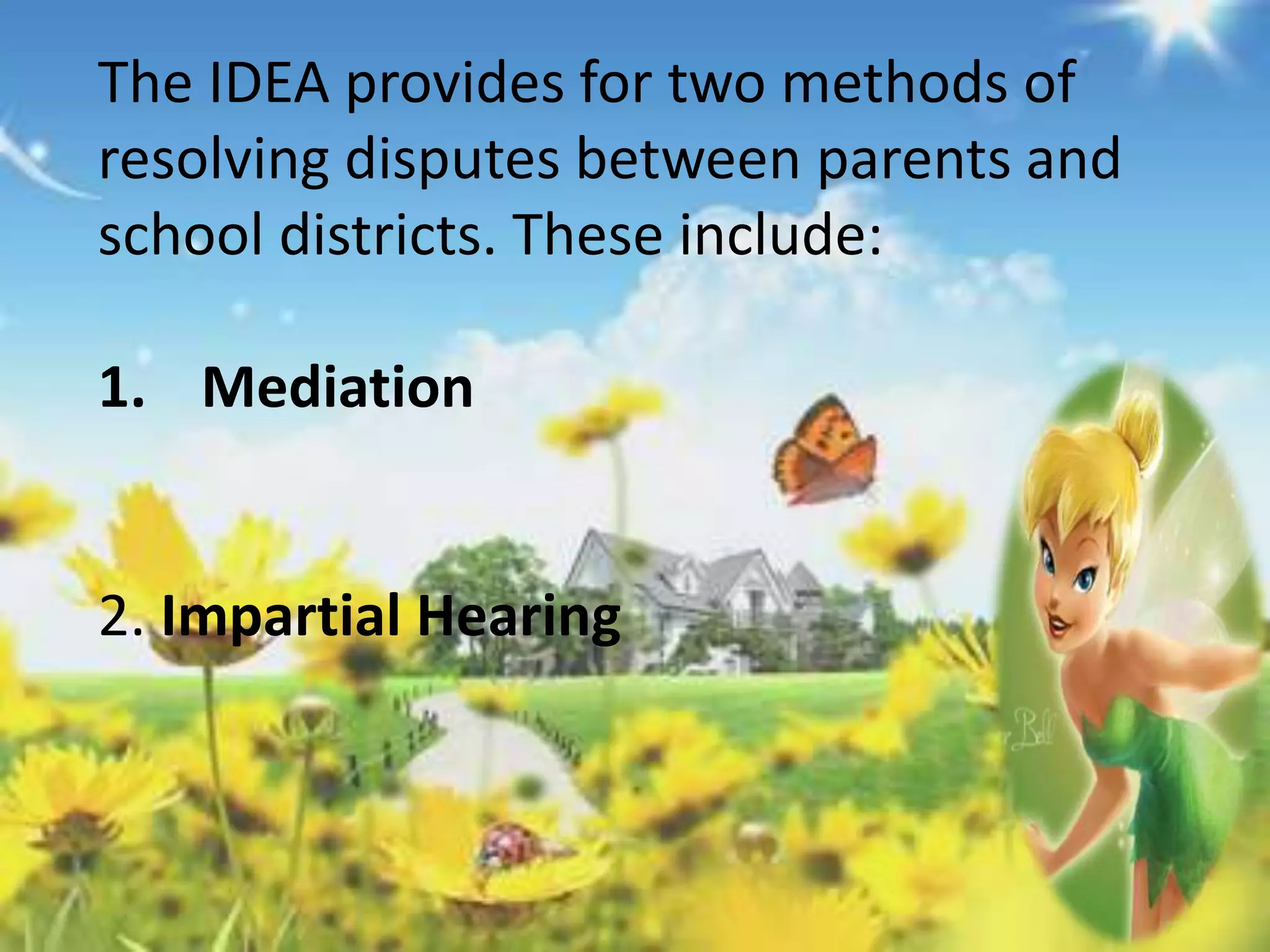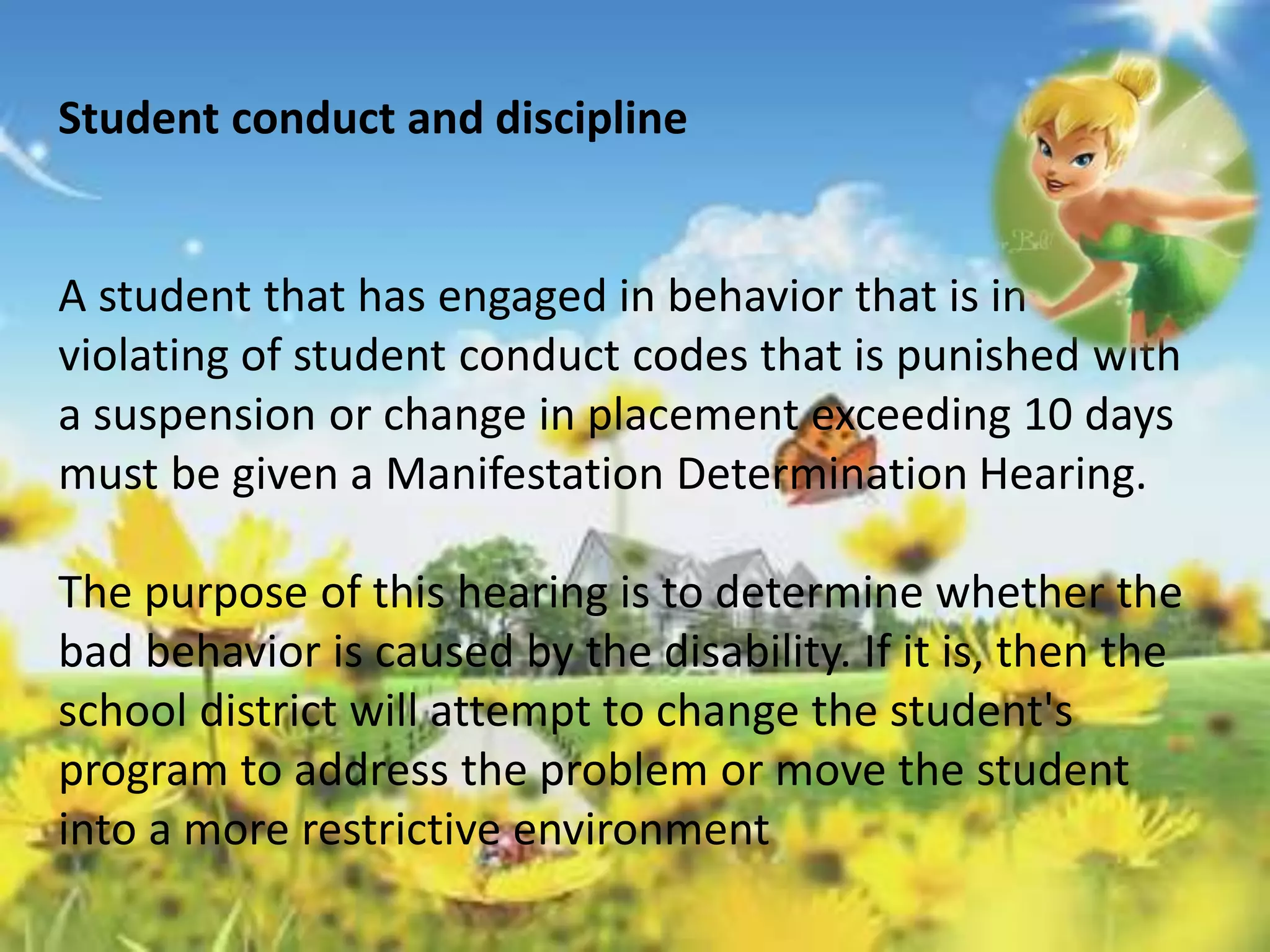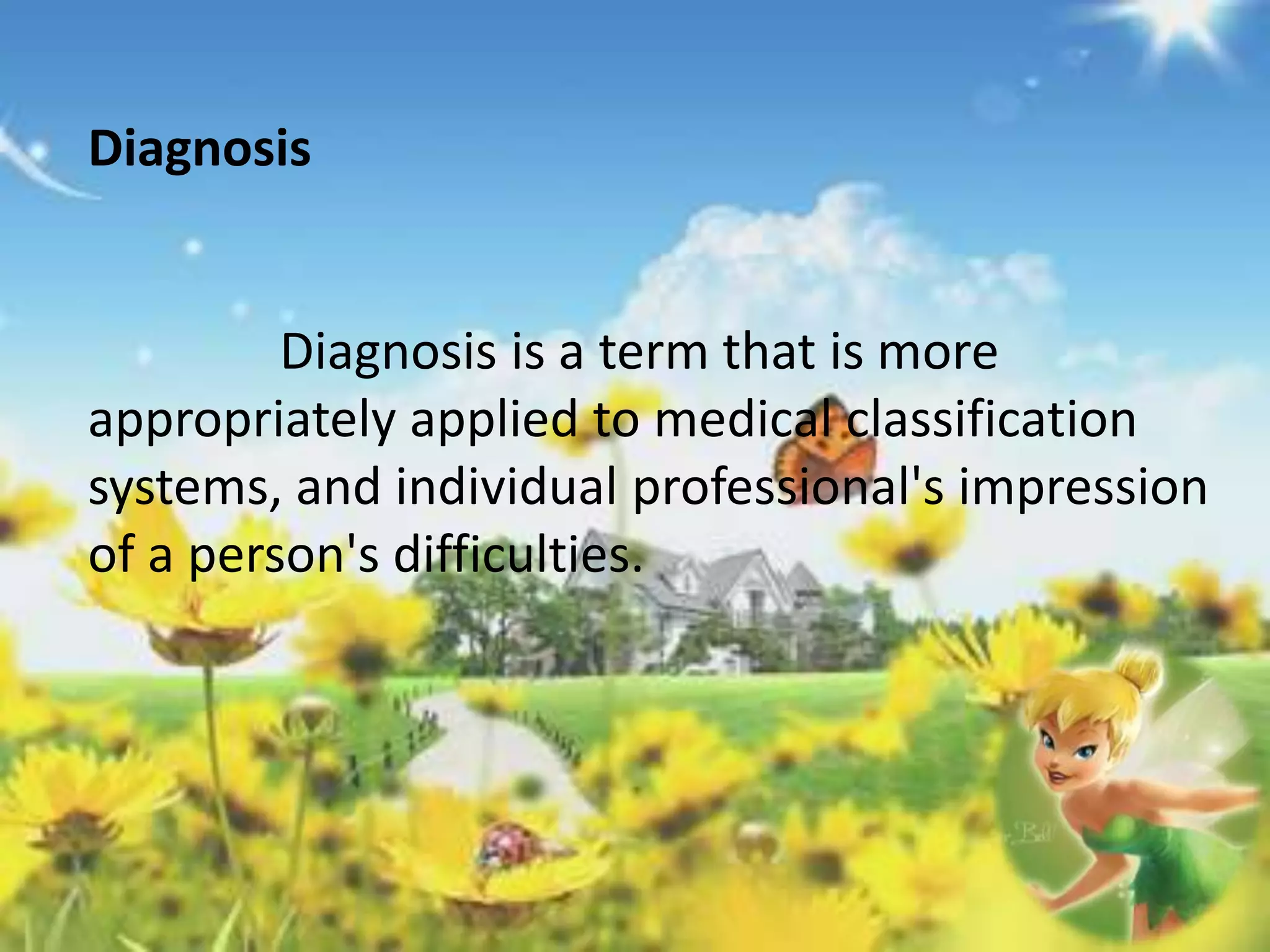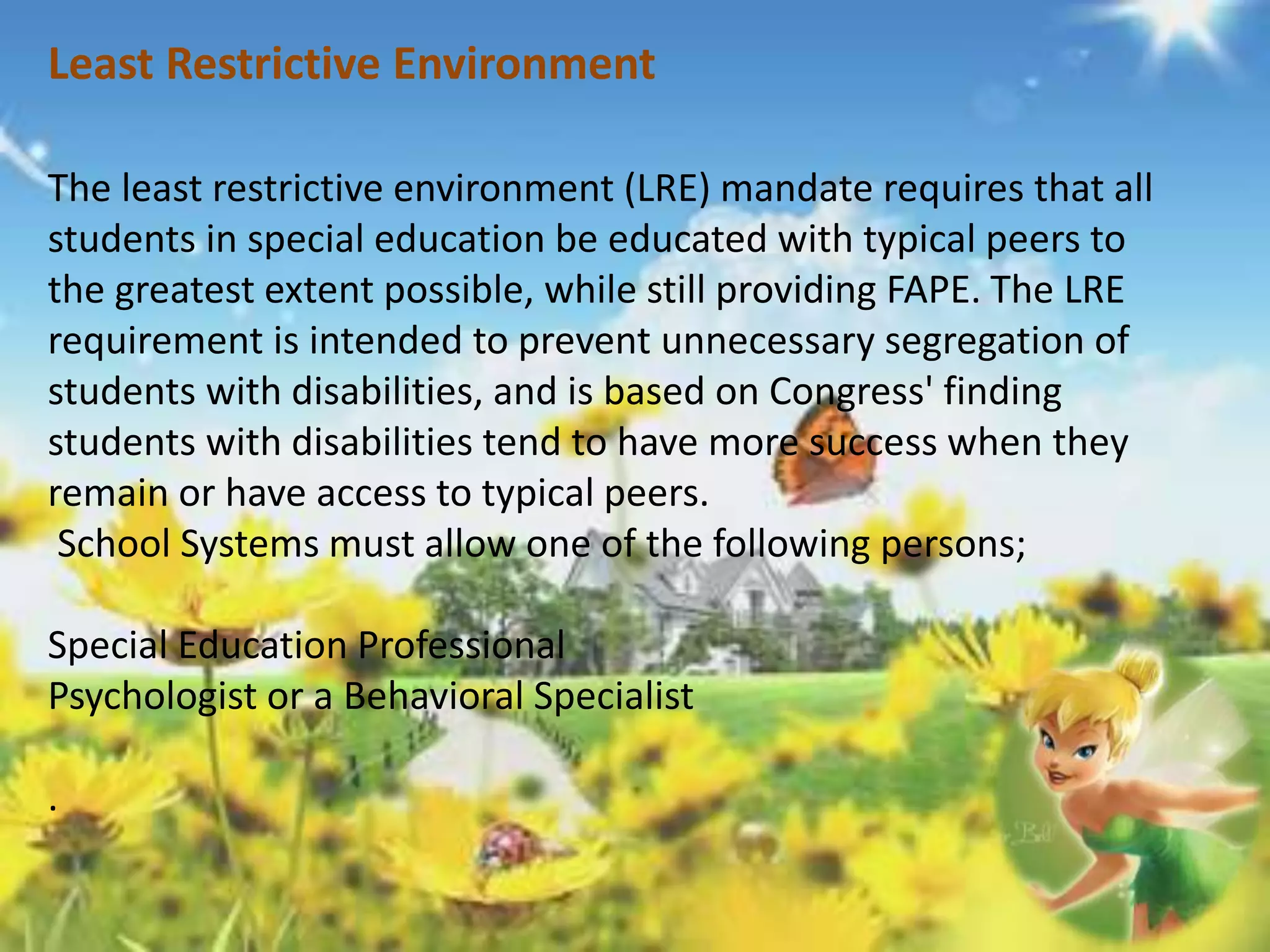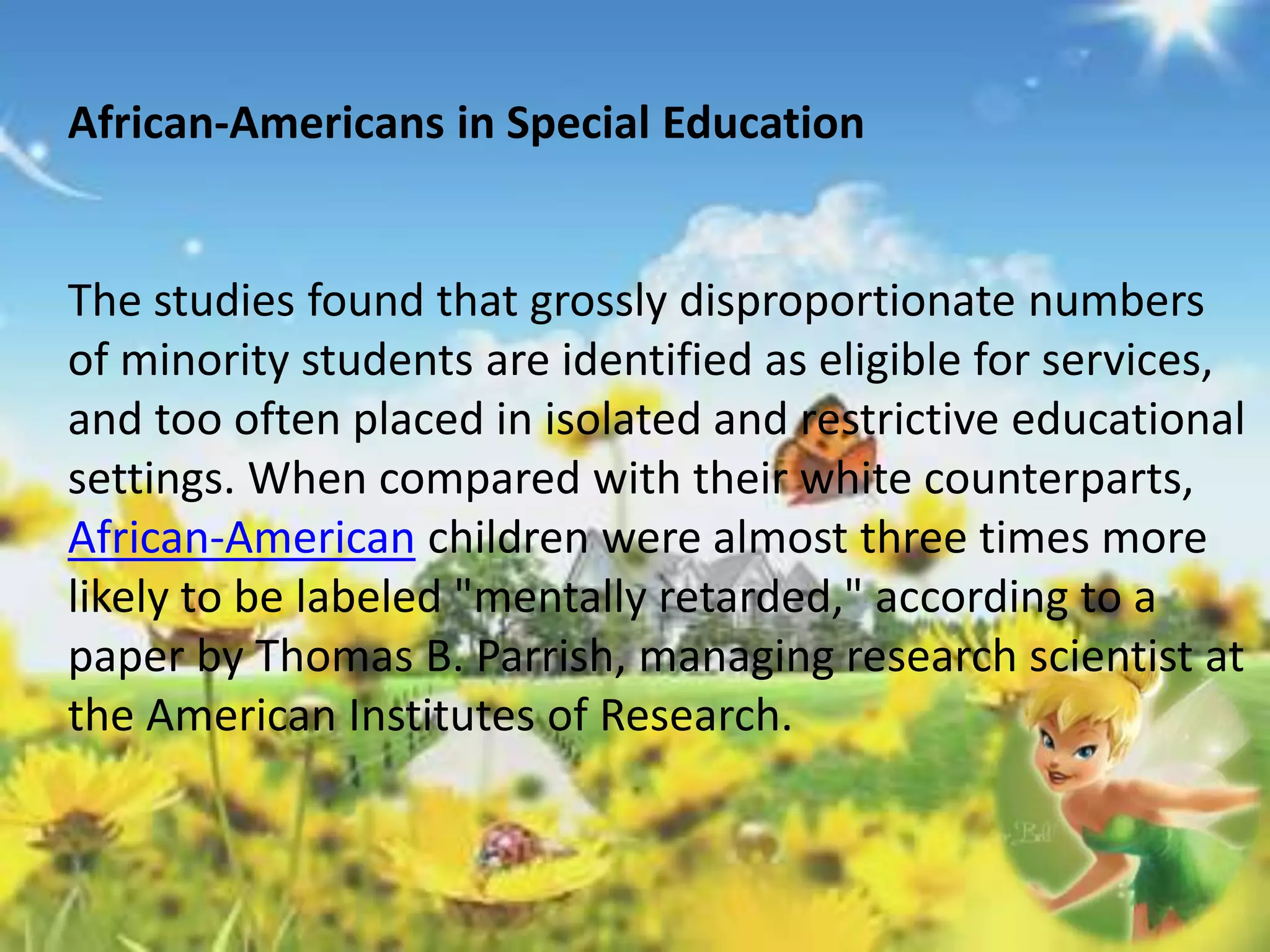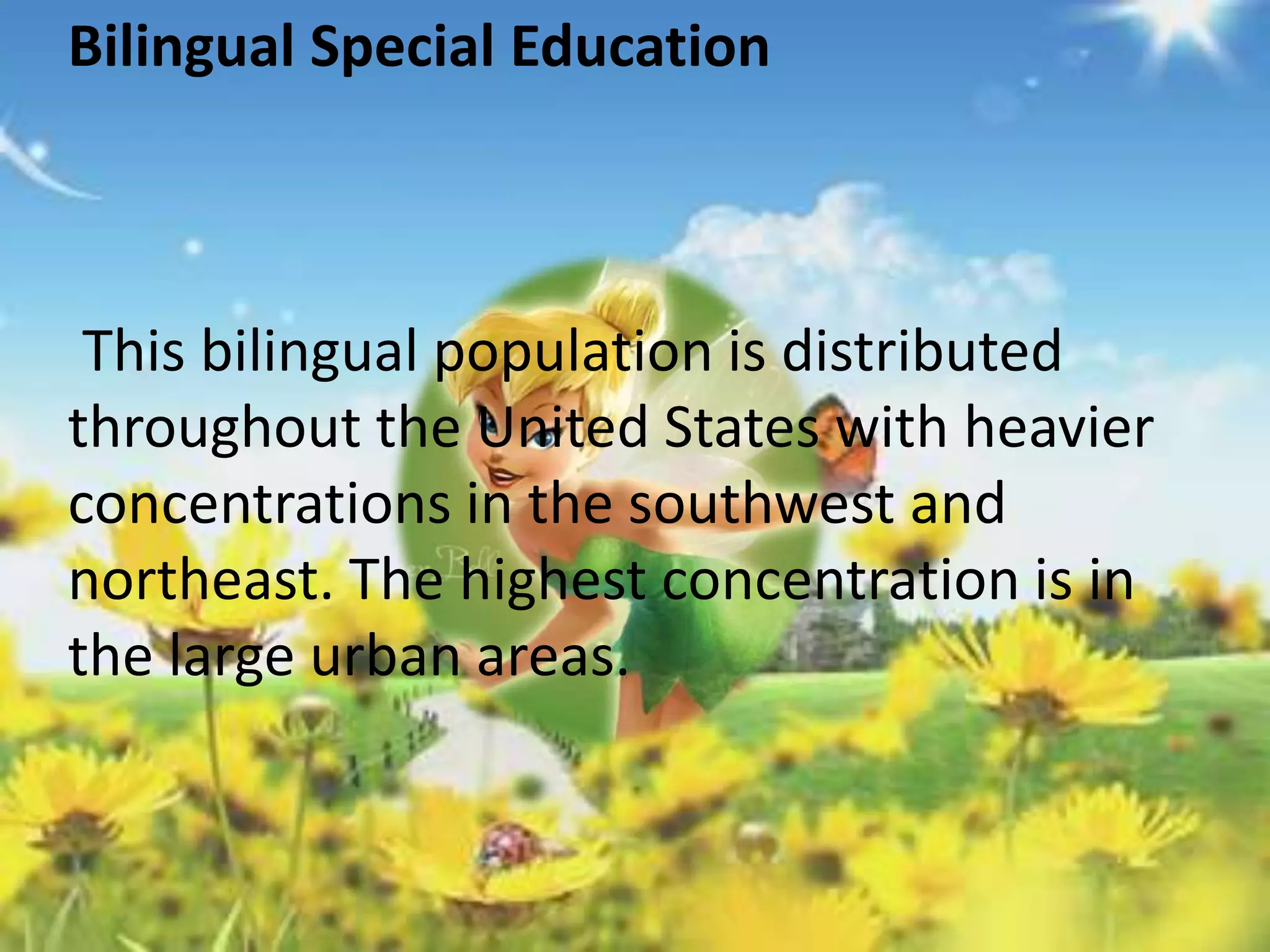The document discusses the history and implementation of special education in the United States. It began with the Education for All Handicapped Children Act of 1975 which mandated special education programs. This was later replaced by the Individuals with Disabilities Education Act (IDEA) which entitles students to a free and appropriate public education. The IDEA requires schools to evaluate students, develop Individualized Education Programs (IEPs), and provide services and accommodations in the least restrictive environment. The document provides details on evaluating and classifying students, developing IEPs, determining placements, and the categories of disabilities covered under special education.
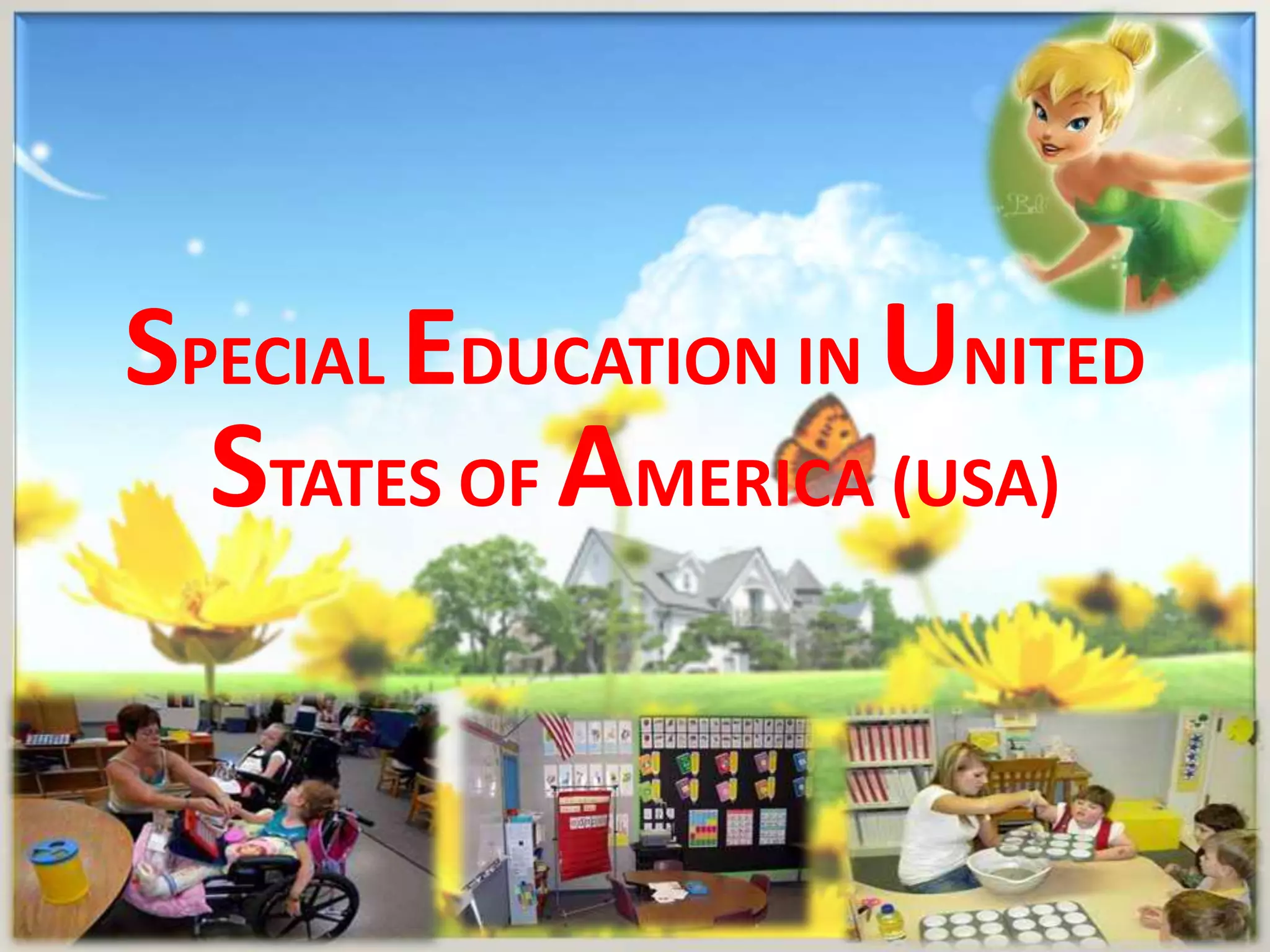
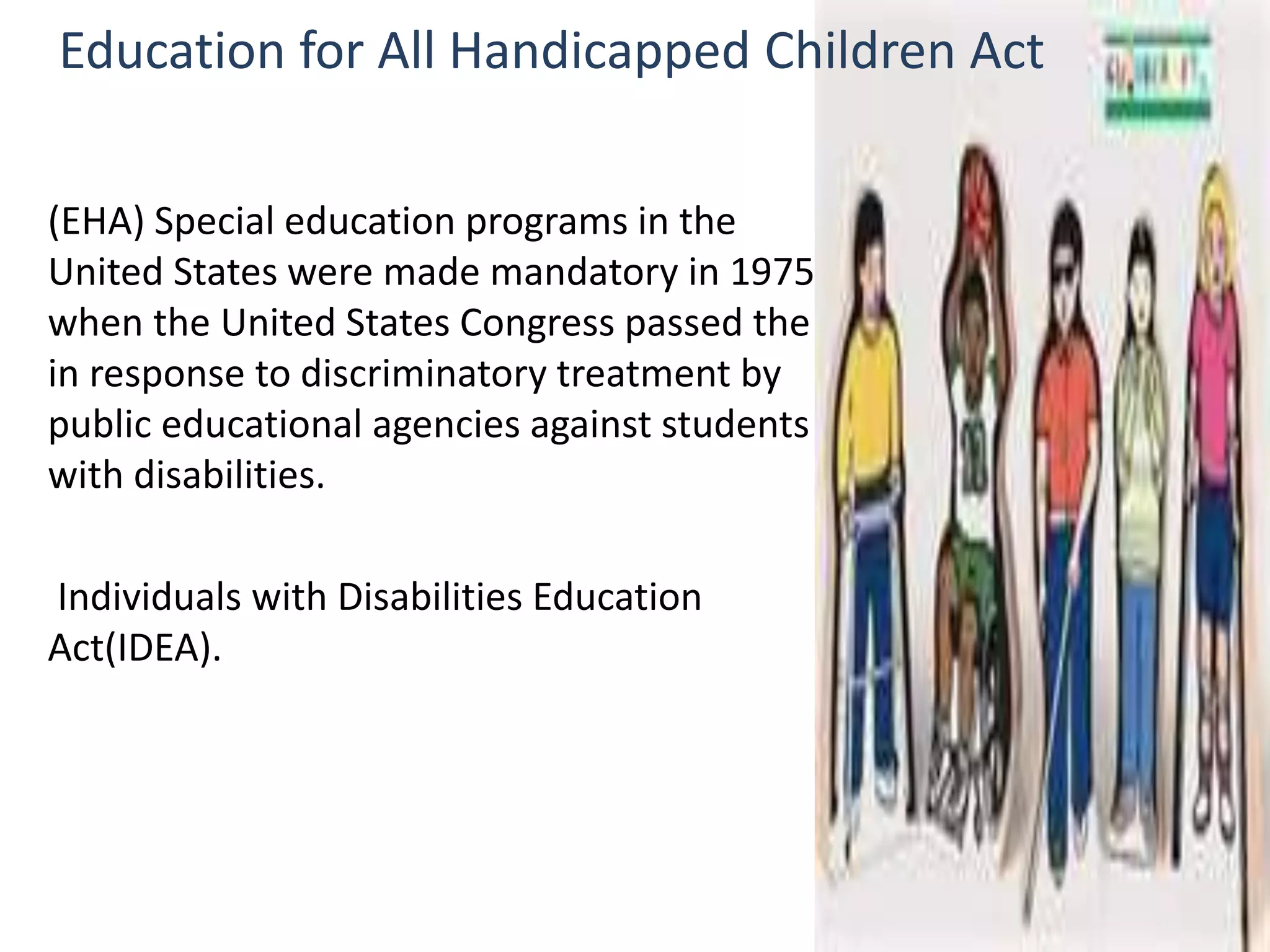
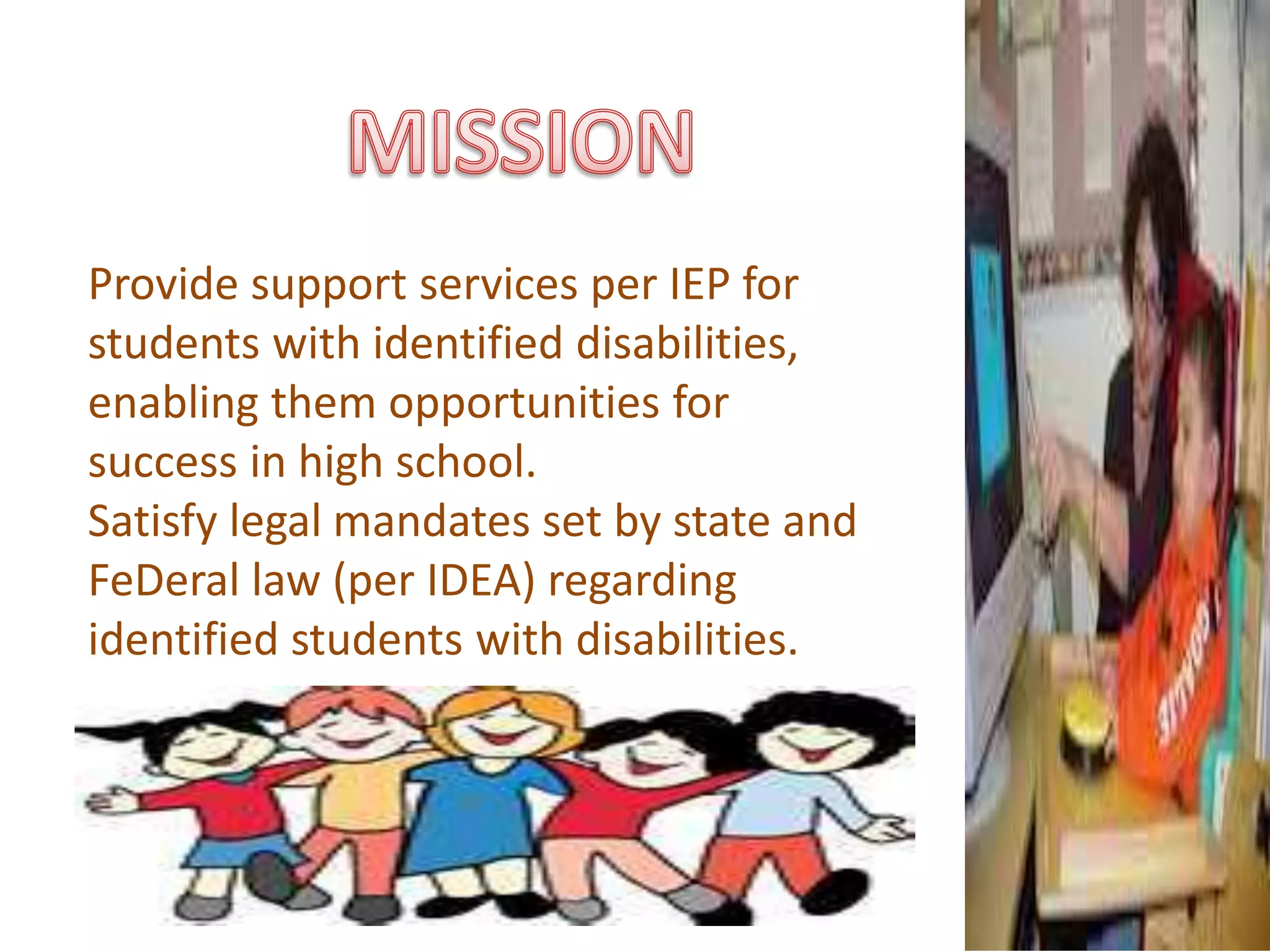
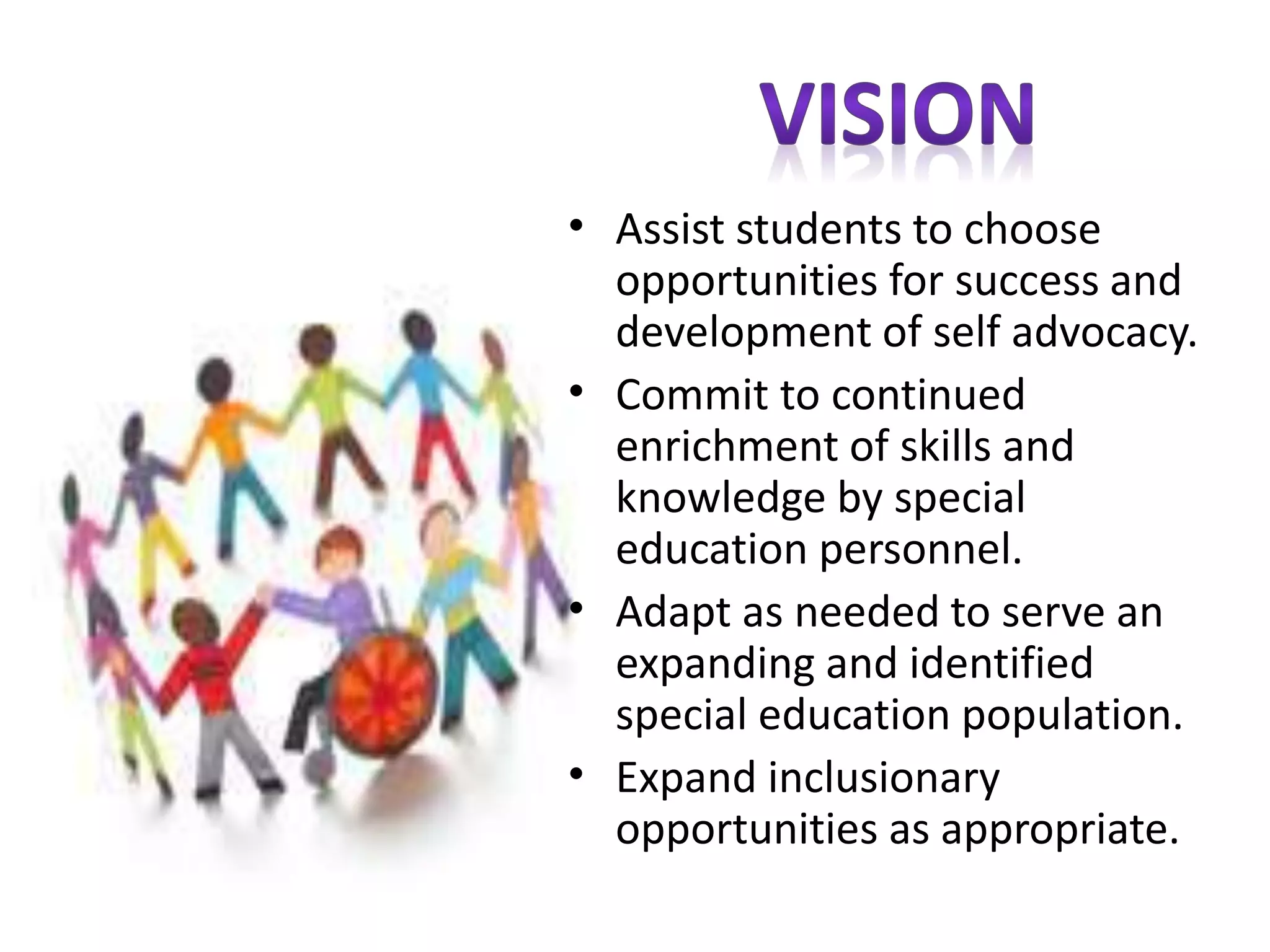
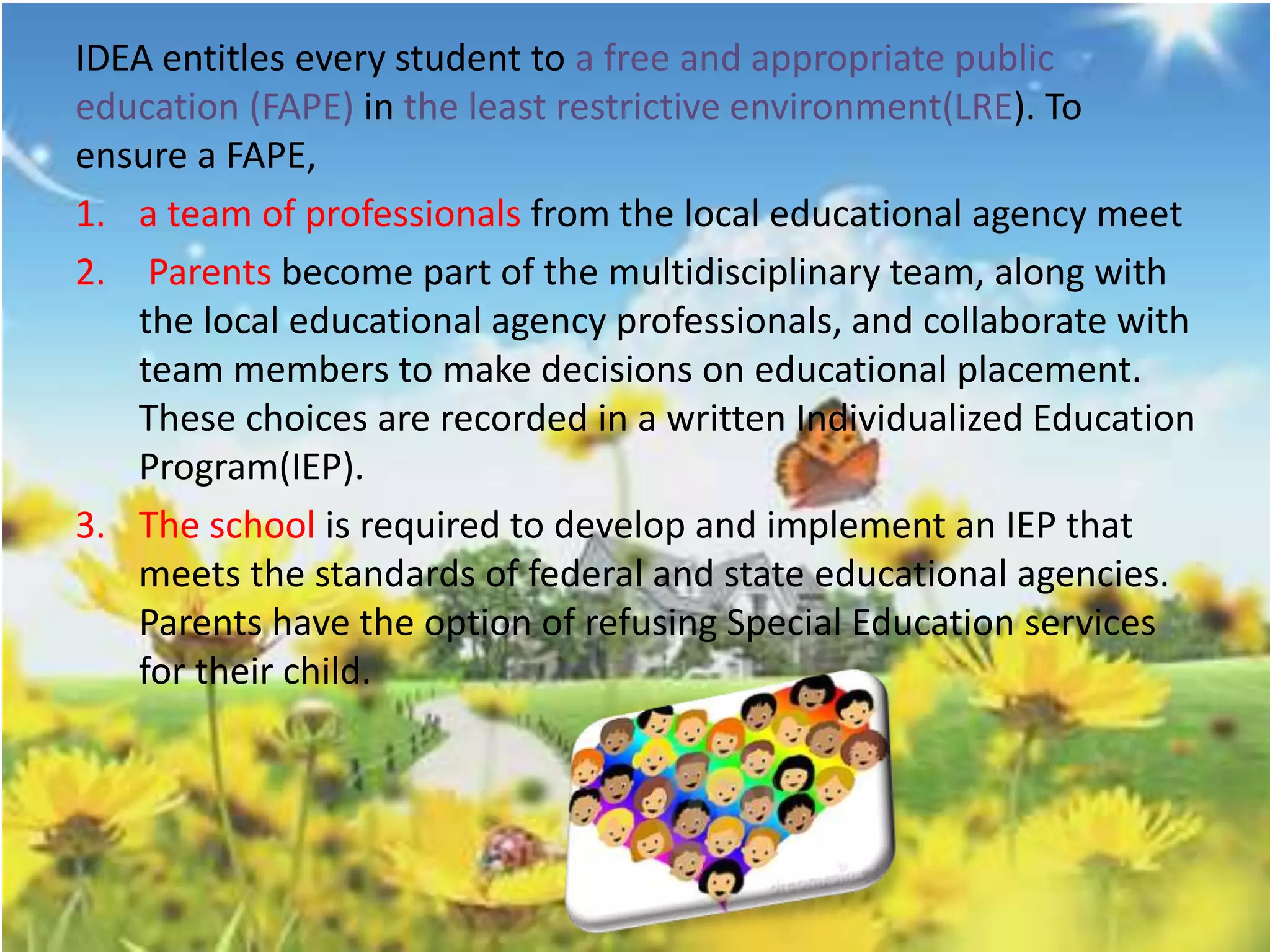
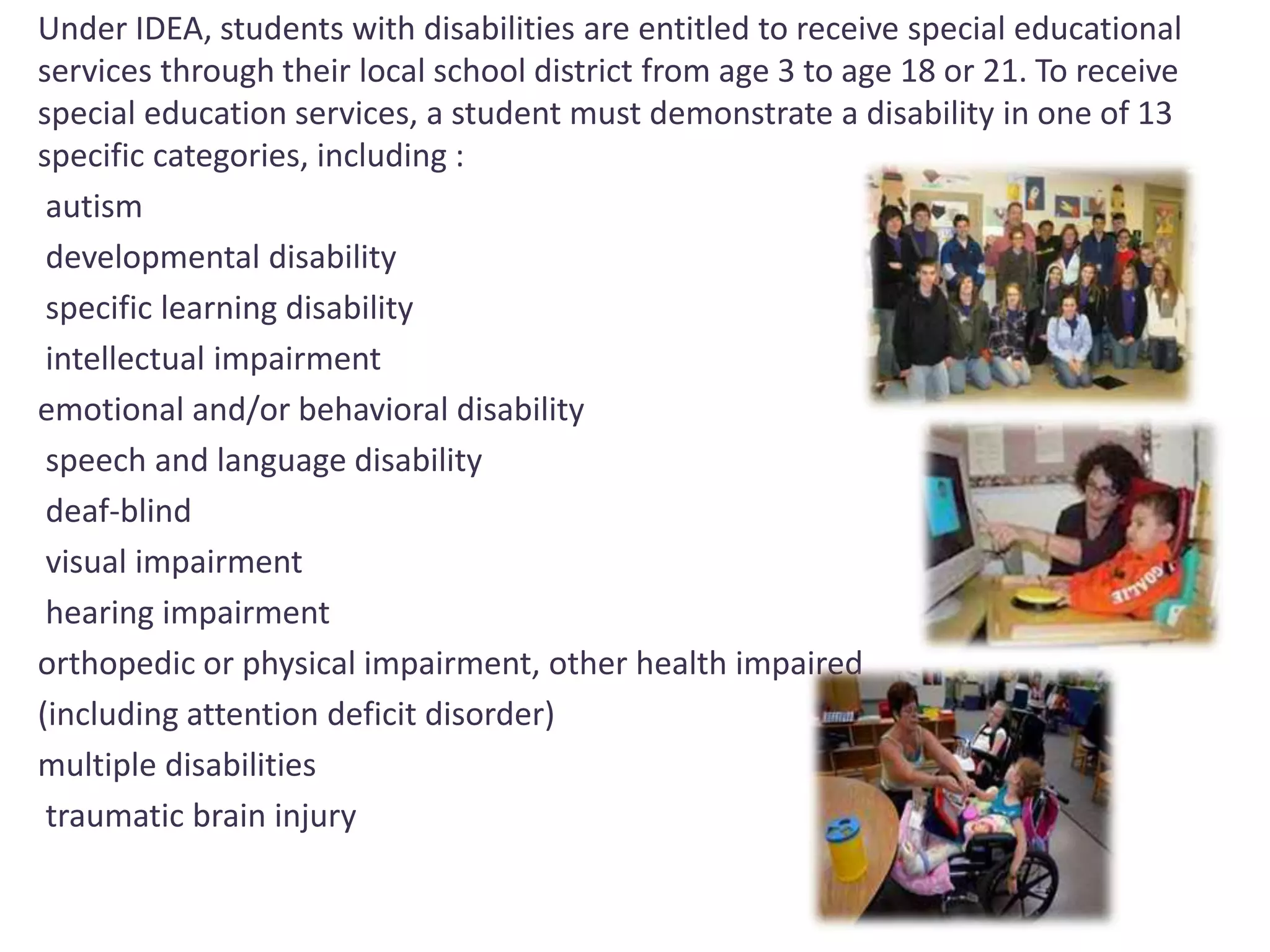
![Implementation through Cooperative Federalism
Special education programs at the district level are
structured upon a cooperative federalism model and
therefore governed by both state and federal law. The
Court explains:
IDEA is frequently described as a model of cooperative federalism.
It leaves to the States the primary responsibility for developing and executing
educational programs for handicapped children, [but] imposes significant
requirements to be followed in the discharge of that responsibility.](https://image.slidesharecdn.com/spedinusapptgpb-141130194712-conversion-gate02/75/Sped-in-usa-ppt-gpb-7-2048.jpg)
